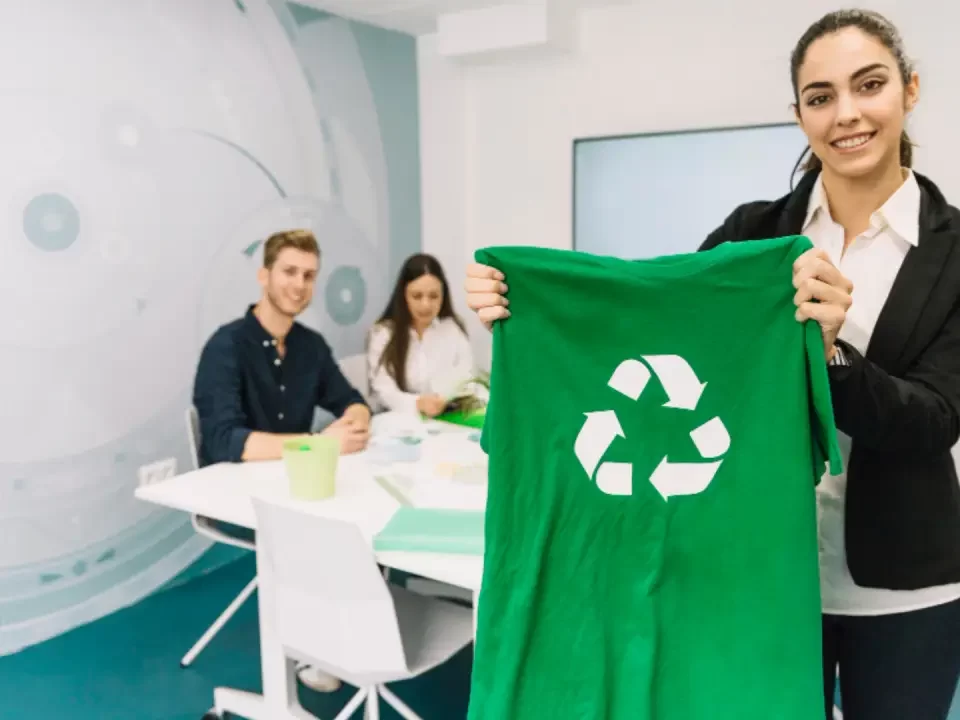
What is Textile Recycling?
31 August 2024What is Regenerated Fiber?
According to research, 30% of textiles are recycled, while 600,000 tons of textiles are put on the market every year. For this reason, it is very important to develop the recycling sector and recover textile waste.
Regenerate means recycling. When you look at the literature, regenerate and recycling mean the same. Recycle fiber is the recycling of polyester fiber by mechanical and chemical means. Regenerate fiber is mostly the mechanical conversion of textile wastes and textile waste clippings back into fiber.
Textile recycling makes it possible to limit waste by reusing materials and limiting the energy expenditure required for production. This technique, which is increasingly used in the fashion sector, promotes sustainable development.
Regenerated Fiber is created by recovering and recycling materials that are already used for other purposes. Therefore, they contribute to a circular economy where the waste of some becomes the raw material of others.
Advantages of Using Recycled Fiber
The advantages of using recycled fiber are summarized as follows:
- Saving drinking water, you save 95% with regenerated fiber.
- Savings in raw material production and dyeing, which also means saving energy.
- Less impact on ecosystems and natural resources, 90% CO2 emissions, and reuse of waste to produce new products.
- Saving time and money by not having to import textiles consumed in Europe from Asia, which reduces the carbon footprint.
- Clean and sustainable waste disposal.
Difference Between Regenerated Fiber and Non-Regenerated Fiber
It is the complete shearing of normal fiber lengths during the process of breaking them into smaller pieces while they are in the fabric state and then turning them into fiber. The reason why regenerated fiber is used in high rates in production was initially because it was more pocket-friendly, but today, since the concept of sustainability is better understood, it has started to be used for the purpose of being environmentally friendly.
By using regenerated fiber, you save a product that may not be used again, thus benefiting nature. Regenerated (opening) fibers are, in short, more affordable and environmentally friendly.
The use of regenerated fibers reduces the environmental impact (CO2, water pollution, resource consumption) by approximately 98% compared to the production of unprocessed fiber.
How is Fiber Production from PET Bottles Done?
At this point, the production of recycled fiber or polyester yarn from PET bottles would be a more accurate definition.
There are 3 types of methods for recycling PET bottles:
- Thermal Recycling
- Mechanical Recycling
- Chemical Recycling
The input and output of these 3 methods are the same. The input is the PET bottle and the output is polyester fiber. There may be differences in the processes. In one process, bottles are washed, broken, turned into chips, and turned into cut fiber. They can be converted into endless fiber and endless yarns with different methods.
How Do Regenerated Fibers Help Protect Nature?
We know that the textile industry consumes 18% of pesticides worldwide and is responsible for 10% of greenhouse gases at the same scale.
We can provide ethical fashion with clothes made from regenerated fibers. Recycling used fabrics is very beneficial for the environment. Recycled materials have less impact on the planet because they require less energy and water. A recycled garment is less aggressive towards nature because almost all of its carbon footprint has already been completed during its first life.
We are seeing a collective awareness formed by the horror of climate change. People are now flocking to products with Eco and Organic labels. This is driving many brands and companies to turn to clothing designs made from regenerated fibers. The increase in sales is driving creations in biodegradable or organic textile products. Now, there is a society that is much more inclined to environmentally friendly consumption.
How Does the Regenerated Fiber Process Work?
We know how important using regenerated fibers is for our world. We value future generations and encourage the use of recycled raw materials in the development of the textile industry. What are the steps of regenerated fiber production?
- First, used clothing and textile waste clippings come to the selection section of the factory.
- Cotton, nylon, and all kinds of foreign materials are separated during the production stages.
- The waste clippings are sorted according to their types and colors and baled.
- They are turned into fiber with fiber-pulling machines.
- Finally, fiber bales are made ready for yarn production with a press machine.


